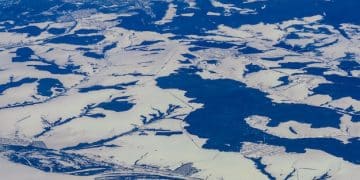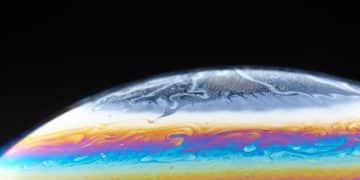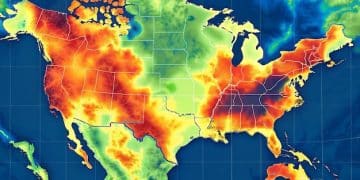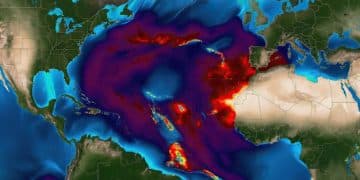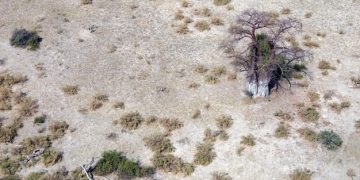Permafrost Thaw & Climate Change: A US Perspective
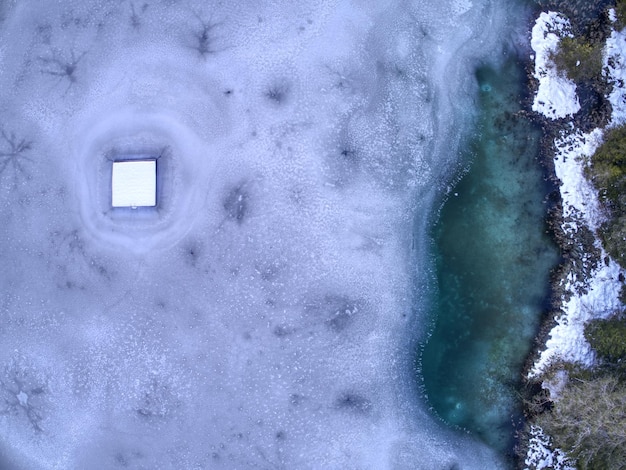
The thawing of permafrost in the US, particularly in Alaska, poses a significant and accelerating threat to global climate change due to the release of trapped greenhouse gases, impacting infrastructure and ecosystems.
Delving into the complex interplay between the Arctic and global climate systems reveals a critical phenomenon: the thawing of permafrost. Understanding the role of permafrost thaw in accelerating climate change: a US perspective is paramount as this silent process unleashes profound consequences, not only for the United States but for the entire planet.
The Alaskan Arctic: Ground Zero for Permafrost Thaw
The vast, frozen landscapes of Alaska represent a front line in understanding the accelerating impact of permafrost thaw on global climate change. This region, home to much of the United States’ permafrost, is experiencing warming temperatures at a rate significantly higher than the global average.
Historical context of Alaskan permafrost
For millennia, Alaska’s permafrost has served as a colossal, frozen vault, locking away organic matter—ancient plants and animals—that accumulated over thousands of years. This frozen ground, whether continuous or discontinuous, extends deep into the earth, preventing decomposition and the release of carbon and methane.
- Indigenous communities have long adapted to and lived harmoniously with the frozen ground.
- Scientific understanding of permafrost’s role in the global carbon cycle has evolved significantly over recent decades.
- Early research highlighted permafrost as a stable component of the Arctic ecosystem.
- Modern studies increasingly reveal its vulnerability to climate shifts.
However, as atmospheric temperatures climb, this once-stable foundation is beginning to yield. The thawing process isn’t uniform; it can occur gradually, or in abrupt, dramatic events known as thermokarst. These rapid thaw events create chaotic landscapes of sinkholes, slumps, and lakes, profoundly altering the environment.
Observed changes and their implications
Recent decades have seen undeniable evidence of widespread permafrost degradation across Alaska. Scientific expeditions and long-term monitoring sites report active layer thickening—the surface layer that thaws annually—and a general warming of permafrost temperatures at depth. These observations aren’t just academic; they have tangible, immediate implications.
- Increased ground instability threatens vital infrastructure.
- Altered hydrologic cycles affect water availability and ecosystem health.
- Changes in vegetation patterns due to subsidence and waterlogging.
- Potential for further acceleration of thaw through positive feedback loops.
The vast store of carbon contained within Alaskan permafrost, estimated to be more than double the amount currently in the atmosphere, represents a critical tipping point. Its release, primarily as carbon dioxide and methane, could cascade into a self-perpetuating cycle, further accelerating global warming beyond current projections. This makes Alaska not just a local concern, but a global bellwether for the future of our climate.
The Mechanics of Thaw: How Permafrost Releases Greenhouse Gases
The thawing of permafrost is not just about ice melting; it’s a complex biogeochemical process that fundamentally alters the Arctic carbon cycle. Understanding the mechanics behind how permafrost releases greenhouse gases is crucial for grasping its profound impact on climate change.
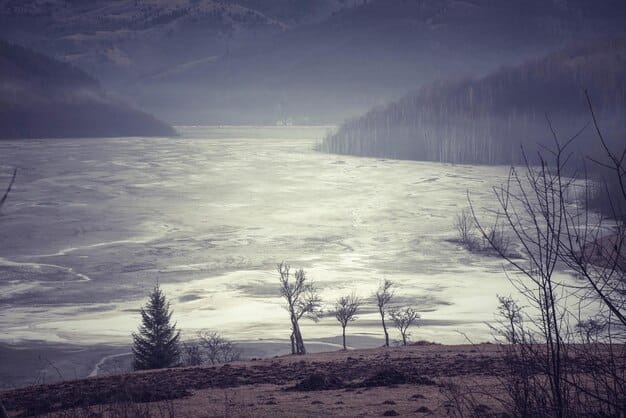
Decomposition and microbial activity
At its core, permafrost thaw exposes ancient organic matter to microbial decomposition. For millennia, this material—comprising frozen plants, animals, and soil carbon—has been preserved in a state of suspended animation, locked away by sub-zero temperatures. As the ground warms and thaws, dormant microbes awaken and begin to break down this organic material.
- Aerobic decomposition occurs in oxygen-rich environments, primarily producing carbon dioxide (CO2).
- Anaerobic decomposition takes place in waterlogged, oxygen-poor conditions, generating significant amounts of methane (CH4).
- The rate and type of gas released depend heavily on moisture levels and temperature.
Methane, though present in smaller quantities than CO2, is a far more potent greenhouse gas, trapping significantly more heat in the atmosphere over a shorter period. The balance between aerobic and anaerobic conditions in thawing permafrost landscapes—often dictated by the formation of thermokarst lakes and wetlands—will therefore be a critical determinant of the overall climate impact.
Hydrological changes and feedback loops
Permafrost thaw dramatically alters the hydrological landscape. As ice-rich permafrost melts, the ground can collapse, forming depressions that fill with water, creating new lakes (thermokarst lakes) or expanding existing ones. These changes create powerful feedback loops that can accelerate further thawing.
- Increased thermal conductivity of water compared to frozen soil accelerates thaw beneath lakes.
- Lateral thawing from lake margins expands water bodies and deepens thaw bulbs.
- Changes in surface hydrology affect drainage patterns and the distribution of wet vs. dry areas.
The formation of thermokarst lakes is particularly concerning because they create anaerobic conditions ideal for methane production. Furthermore, the accumulation of warmer water on the surface can drive deeper thawing, releasing even more ancient carbon. This creates a positive feedback loop: warming causes thaw, thaw releases greenhouse gases, which causes more warming, and so on.
Beyond these direct emissions, there are other, less direct feedback mechanisms. Changes in vegetation, such as the spread of shrubs into tundra, can alter the ground’s albedo (reflectivity) and snow cover dynamics, further influencing permafrost temperatures. Understanding these intricate pathways is essential for projecting future climate scenarios, as the sheer scale of the carbon reservoir within permafrost means its destabilization could significantly complicate efforts to mitigate global warming.
Projected Impacts on US Infrastructure and Ecosystems
The accelerating thaw of permafrost in the United States, particularly across Alaska, poses a grave and multi-faceted threat that extends far beyond atmospheric greenhouse gas releases. Its direct impacts on infrastructure, ecosystems, and human communities are already being felt and are projected to intensify dramatically in the coming decades.
Threats to critical infrastructure
Decades of construction in permafrost regions, from roads and pipelines to buildings and airports, assumed a stable, frozen foundation. As permafrost thaws, this foundation liquefies and subsides, leading to widespread structural damage.
- Roads and runways: Uneven sinking creates dangerous potholes, cracks, and requires constant, costly repairs.
- Buildings and homes: Foundations shift, walls crack, and structures lean, rendering homes unsafe and sometimes uninhabitable.
- Pipelines and utilities: Instability threatens the integrity of oil and gas pipelines, water mains, and communication lines, risking environmental disasters and service disruptions.
- Coastal erosion: Thawing permafrost cliffs combined with sea ice loss and increased storm surges accelerate coastal erosion, threatening entire communities.
The financial burden of repairing or relocating this collapsing infrastructure is immense, placing significant strain on local and federal budgets. Many remote Alaskan communities are particularly vulnerable, with limited resources to adapt to these rapid environmental changes.
Ecosystem disruption and biodiversity loss
The intricate web of life sustained by permafrost is equally at risk. Changes in underlying ground stability and hydrology fundamentally alter habitats, impacting both flora and fauna.
- Wetland changes: Formation of thermokarst lakes and widespread waterlogging changes wetland ecosystems, affecting waterfowl and aquatic life.
- Forest degradation: Subsidence can create “drunken forests” where trees tilt and die, impacting timber resources and wildlife habitats.
- Altered hydrology: Changes in streamflow, lake levels, and groundwater dynamics affect fish populations and water quality vital for communities.
- Wildlife migration and health: Disruptions to traditional migration routes, foraging grounds, and increased exposure to pathogens previously frozen in permafrost could have far-reaching effects on caribou, moose, and other iconic Arctic species.
Beyond the immediate visible impacts, permafrost thaw can unleash dormant viruses and bacteria, posing potential health risks. The long-term ecological consequences are complex, potentially leading to widespread biodiversity loss and a fundamental reordering of Arctic ecosystems, which in turn impacts the subsistence lifestyles of Indigenous populations who have relied on these environments for millennia. This interconnectedness underscores the urgency of addressing permafrost thaw as a critical component of climate resilience strategies.
Policy and Research Initiatives in the US
Recognizing the severe implications of permafrost thaw, the United States has begun to implement various policy and research initiatives aimed at understanding, monitoring, and mitigating its effects. These efforts reflect a growing awareness of the unique challenges posed by a warming Arctic.
Federal and state-level responses
At the federal level, agencies like the National Science Foundation (NSF), the National Oceanic and Atmospheric Administration (NOAA), the US Geological Survey (USGS), and NASA are funding extensive research programs to better understand permafrost dynamics and its contribution to climate change. These programs often involve:
- Long-term monitoring sites to track ground temperature, active layer thickness, and greenhouse gas fluxes.
- Satellite remote sensing to map permafrost distribution and thaw progression across vast areas.
- Development of predictive models to forecast future thaw scenarios and their impacts.
- Collaboration with international partners to share data and best practices.
Alaska, as the most affected state, has its own initiatives, often working in conjunction with federal agencies. The Alaska Center for Climate Assessment and Policy (ACCAP) at the University of Alaska Fairbanks, for instance, focuses on delivering climate information to decision-makers and communities. There’s also increasing emphasis on supporting adaptation planning for communities directly impacted by thaw, though the scale of the challenge often outstrips current funding and resources.
Policy debates continue around how to best integrate permafrost thaw considerations into land management, infrastructure planning, and environmental regulations. There is a growing recognition that “business as usual” is no longer viable in permafrost regions, necessitating a shift towards more resilient designs and adaptive strategies.
Scientific advancements and data collection
Recent scientific advancements have dramatically improved our ability to observe and understand permafrost changes. Innovations in remote sensing technology, coupled with traditional ground-based measurements, are providing an unprecedented view of the thawing Arctic.
- Airborne lidar and satellite imagery: Provide detailed topographic data and track ground subsidence over large areas.
- Ground-penetrating radar (GPR): Offers insights into underground ice content and thaw depths.
- Microbial ecology studies: Deepen understanding of how different microbial communities process organic matter and produce greenhouse gases.
- Isotope analysis: Helps differentiate between old carbon released from permafrost and recent carbon sources.
The collection of comprehensive, long-term datasets is critical for refining climate models and making more accurate predictions about future emissions from permafrost. However, significant gaps remain, especially concerning the spatial variability of thaw and the precise quantification of methane versus carbon dioxide emissions from different permafrost types. Continued investment in basic and applied research is indispensable for developing effective strategies to address this complex and urgent environmental challenge.
Global Implications for Climate Change Mitigation
The thawing of permafrost in the US Arctic has profound implications that extend far beyond national borders. As a significant, and potentially escalating, source of greenhouse gas emissions, permafrost thaw presents a formidable challenge to global climate change mitigation efforts, necessitating a fundamental rethinking of emission reduction strategies.
The permafrost carbon feedback loop
The primary global concern stemming from permafrost thaw is the activation of the permafrost carbon feedback (PCF). This refers to the process where warming temperatures thaw permafrost, leading to the release of carbon dioxide and methane, which in turn causes further warming, leading to more thawing.
- The PCF acts as a positive feedback loop, amplifying initial warming trends.
- Its existence implies that even if human-caused emissions were to cease, permafrost emissions would continue for decades or centuries.
- Current climate models often struggle to fully incorporate the complexity and scale of PCF, potentially underestimating future warming.
The sheer volume of carbon stored in permafrost—estimated at 1,300 to 1,600 gigatons, roughly twice the amount currently in the atmosphere—means even a small percentage released could significantly impact global carbon budgets. This makes achieving the Paris Agreement goals (limiting warming to well below 2°C, preferably to 1.5°C) considerably more challenging.
Challenges to climate modeling and policy
Integrating the permafrost carbon feedback into global climate models is a complex scientific challenge. The variability of thaw rates, the mix of CO2 and methane released, and the hydrological changes involved make precise predictions difficult. This uncertainty poses a dilemma for policymakers.
- Difficulty in accurately projecting future warming scenarios that account for PCF.
- Need to potentially revise “safe” carbon emission targets downwards.
- Increased urgency for more aggressive and rapid decarbonization efforts globally.
- Development of adaptation strategies that account for increased warming from permafrost emissions.
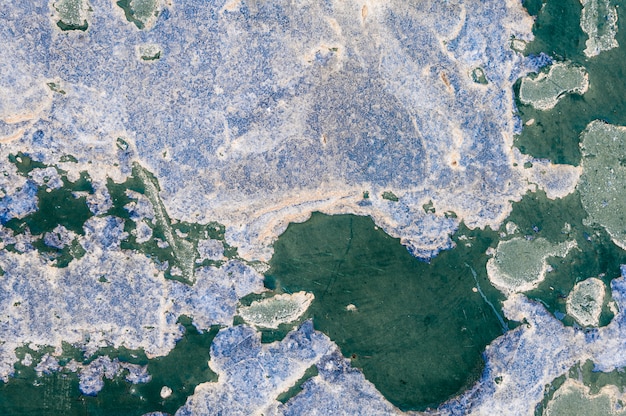
Furthermore, permafrost emissions are largely uncontrollable by direct human intervention once the thaw process begins. This underscores the critical importance of preventing further global warming that would trigger more widespread thaw. The international community must therefore view permafrost thaw not just as an Arctic problem, but as a global climate determinant that requires immediate, collective action to reduce anthropogenic greenhouse gas emissions far more drastically than currently planned. This global interconnectedness highlights the shared responsibility in addressing this silent, yet profound, accelerator of climate change.
Mitigation and Adaptation Strategies
Addressing the challenges posed by permafrost thaw requires a dual approach: global mitigation of greenhouse gas emissions to slow warming, and localized adaptation strategies to cope with the inevitable changes already underway. While directly “stopping” permafrost thaw is largely impossible once warming crosses a certain threshold, focused interventions can alleviate its impacts.
Global emission reduction efforts
The most effective strategy to mitigate permafrost thaw on a planetary scale is to drastically reduce global greenhouse gas emissions. This directly tackles the root cause of permafrost warming and the activation of the permafrost carbon feedback loop.
- Transition to renewable energy: Phasing out fossil fuels is paramount to limiting global temperature rise.
- Energy efficiency: Reducing overall energy consumption across all sectors.
- Carbon capture and storage: Developing technologies to remove CO2 from the atmosphere, though its scalability and cost remain challenges.
- Reducing non-CO2 gases: Efforts to reduce methane and nitrous oxide emissions from other sources can also play a role.
The faster humankind collectively reduces its carbon footprint, the greater the chance of preserving more permafrost and avoiding the most catastrophic feedback loops. International cooperation and ambitious policy targets are essential to achieving this.
Local and regional adaptation measures
For communities and ecosystems directly affected by permafrost thaw, adaptation is no longer an option but a necessity. These measures focus on increasing resilience and minimizing damage.
- Infrastructure redesign: Building on piles that allow air circulation, using thermosyphons to keep the ground frozen, or relocating critical facilities to more stable ground.
- Early warning systems: Monitoring permafrost temperatures and ground stability to predict thaw-induced hazards for communities and essential services.
- Community relocation: For highly vulnerable coastal or riverine communities, managed retreat may be the only viable long-term solution, though fraught with social and economic challenges.
- Ecological restoration: Efforts to stabilize eroding slopes, manage water levels in thermokarst areas, and support the resilience of local ecosystems.
Crucially, adaptation strategies must be developed in close consultation with Indigenous communities, who possess invaluable traditional knowledge about living with and observing the Arctic environment. Their insights are vital for crafting effective, culturally appropriate, and sustainable responses. Furthermore, transparent communication and public education are key to fostering understanding and support for these complex and often costly adaptation measures. The scale of adaptation needed underscores that prevention through aggressive emission cuts remains the most responsible and cost-effective approach to the permafrost crisis.
The Future of Permafrost and Climate Action
The trajectory of permafrost thaw in the US, and globally, is inextricably linked to the future of our climate actions. The choices made today will directly determine the extent of permafrost loss and its amplifying effect on global warming, underscoring the urgent need for a cohesive and sustained approach to climate change.
Long-term projections and tipping points
Scientific projections indicate that significant permafrost thaw is unavoidable even under optimistic emission reduction scenarios. The amount of thaw will, however, be highly dependent on the degree of global warming. Exceeding critical temperature thresholds could trigger irreversible “tipping points,” where thaw becomes self-sustaining and accelerates rapidly, regardless of future human emissions.
- Models show continuous permafrost is highly vulnerable to even moderate warming.
- Abrupt thaw events (thermokarst) are expected to become more frequent and widespread.
- The long-term release of greenhouse gases from permafrost could continue for centuries.
- The interaction between permafrost thaw and other Arctic changes (e.g., sea ice loss, Greenland ice sheet melt) could lead to cascading impacts.
These long-term projections highlight that the impact of permafrost thaw is not a temporary phenomenon; it’s a multi-century challenge that will continue to influence atmospheric composition and global temperatures, demanding a prolonged vigilance and adaptive capacity. The permafrost region’s future is a critical barometer for the success or failure of global climate efforts.
Call to action and international cooperation
Addressing permafrost thaw effectively necessitates a two-pronged international effort: aggressive and immediate global decarbonization combined with targeted research and adaptation in Arctic nations. The United States, as a major Arctic nation and a significant emitter, has a unique responsibility and opportunity to lead in both areas.
- Increased R&D investment: Funding for permafrost research, monitoring, and modeling to reduce uncertainties.
- International collaborations: Sharing data, expertise, and best practices across Arctic nations and the scientific community.
- Enhanced policy integration: Incorporating permafrost considerations into national climate change strategies and infrastructure planning.
- Support for Arctic communities: Providing resources and technical assistance for adaptation and relocation where necessary.
The call to action is clear: the permafrost is not just a regional issue but a global climate concern that demands urgent attention. By understanding its scientific complexities, acknowledging its profound impacts, and committing to decisive, collaborative action, the international community can strive to minimize the amplifying effect of permafrost thaw on global climate change and build a more resilient future for all.
| Key Point | Brief Description |
|---|---|
| 🧊 Permafrost Carbon Sink | Alaskan permafrost stores vast amounts of ancient organic carbon. |
| 💨 GHG Release Mechanism | Thawing releases CO2 and potent CH4 from microbial decomposition. |
| 🏗️ Infrastructure Risk | Thaw causes ground subsidence, damaging roads, buildings, and pipelines. |
| 🌍 Global Climate Accelerator | Emissions from permafrost thaw amplify global warming, complicating mitigation. |
Frequently Asked Questions About Permafrost Thaw
▼
Permafrost is ground (soil, rock, or sediment) that remains at or below 32°F (0°C) for at least two consecutive years. In the US, the vast majority of permafrost is found in Alaska, particularly across its northern and western regions, underlying vast expanses of tundra and boreal forests. Smaller, isolated pockets can exist in high-elevation mountain areas in the lower 48 states.
▼
Permafrost contains vast amounts of frozen organic carbon from ancient plant and animal matter. When it thaws, this organic material decomposes due to microbial activity, releasing carbon dioxide (CO2) and methane (CH4) into the atmosphere. Both are potent greenhouse gases, trapping heat and further accelerating global warming, which then leads to more permafrost thawing—a positive feedback loop.
▼
US communities, especially in Alaska, are experiencing direct impacts on infrastructure. Thawing permafrost causes ground subsidence and instability, leading to cracked roads, damaged buildings, failing pipelines, and increased coastal erosion. This poses significant safety, logistical, and financial challenges, sometimes forcing community relocation in extreme cases.
▼
Directly stopping or reversing widespread permafrost thaw once warming begins is extremely challenging. The most effective long-term solution is to drastically reduce global greenhouse gas emissions to limit future temperature increases and thus minimize the extent of thaw. Locally, some engineering methods like thermosyphons can protect specific structures, but these are not scalable for entire regions.
▼
The US government, through agencies like NSF, NOAA, USGS, and NASA, funds extensive permafrost research. This includes long-term monitoring, satellite remote sensing, development of predictive models, and studies on microbial processes. The goal is to better understand the dynamics of permafrost carbon release and its implications for climate change, informing adaptation and mitigation strategies.
Conclusion
As the frozen ground of the Arctic continues to yield to a warming climate, understanding the role of permafrost thaw in accelerating climate change: a US perspective becomes not merely an academic exercise but a critical imperative. The vast carbon reservoir beneath Alaska’s surface represents a formidable amplifier of global warming, releasing greenhouse gases that add to human-caused emissions. The tangible impacts on infrastructure and ecosystems across the US Arctic underscore the immediate and profound challenges faced by vulnerable communities. Addressing this silent accelerator demands a dual commitment: relentless global efforts to reduce greenhouse gas emissions, thereby mitigating future thaw, and robust local adaptation strategies to build resilience against unavoidable change. The future of permafrost is a stark reminder of our interconnected climate system and the urgent need for collective action to safeguard our planet’s delicate balance.
